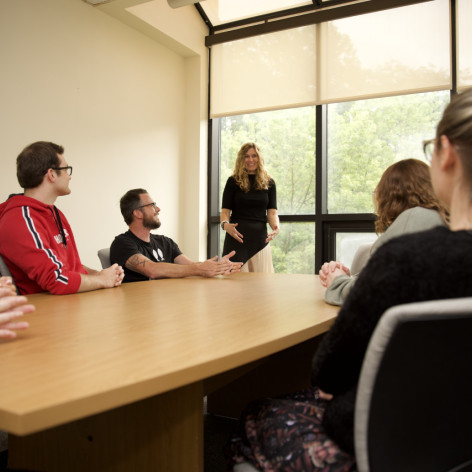Blinded by Science
| See Dr. Bratt's photos online: https://pictures.lytro.com/jbratt/stories/79706. |
For all who enjoy the quips of Sheldon Cooper or who dabbled with a telescope as a child, you know the fun that you can have with physics.
Dr. Jonathan Bratt, assistant professor of physics, recently purchased a new toy for the department that is trying to up the ante.
The department's new light field camera takes interactive photographs showing depth of field. Bratt originally purchased the camera for a demonstration of holography (study of holograms). He hopes to offer a class on the subject in the future.
"This is a different way to capture the same kind of information that a hologram does," he said, explaining that the similarity comes in how both use light. "That's mainly why I like this camera. It's a neat application of physics."
The camera uses a micro-lens array to capture color, intensity and direction of light on a digital image sensor. According to the company's website, the camera captures 11 million light rays. The Light Field Engine then processes the information to create an image that can be refocused with a tap.
So far, Bratt has used the camera to shoot interactive images around campus to gain his understanding of the equipment.
"It's an amazing piece of technology that uses a lot of basic concepts of physics," Bratt said. "That's why I like physics. We can do cool things and have fun with it."
The physics department also utilizes other inspiring tools to give students a better understanding of physics concepts.
In 2003, the university installed a radio telescope on top of the Science Hall. The telescope has been used to study the rotational speed of the Milky Way, and Bratt hopes to also use it for undergraduate research.
"The ongoing goal of such studies is to better understand the structure of our galaxy," Bratt said of the 2010 project which was supported by a mini-grant from the Hammel Research Endowment. "A main purpose of mine in doing this project was to explore the possibility of undergraduate work with the telescope in the future."



